
About UsThe Numismatic Bibliomania Society is a non-profit organization promoting numismatic literature. For more information please see our web site at coinbooks.org SubscriptionsThose wishing to become new E-Sylum subscribers (or wishing to Unsubscribe) can go to the following web page link MembershipThere is a membership application available on the web site Membership Application To join, print the application and return it with your check to the address printed on the application. Membership is only $15 to addresses in the U.S., $20 for First Class mail, and $25 elsewhere. For those without web access, write to: David M. Sundman, Secretary/TreasurerNumismatic Bibliomania
Society AsylumFor Asylum mailing address changes and other membership questions, contact David at this email address: dsundman@LittletonCoin.com SubmissionsTo submit items for publication in The E-Sylum, just Reply to this message, or write to the Editor at this address: whomren@coinlibrary.com
BUY THE BOOK BEFORE THE COINYou won't regret it! |
- WAYNE'S WORDS: THE E-SYLUM SEPTEMBER 23, 2012
- SKLOW MAIL BID SALE NO. 17 CLOSES OCTOBER 6, 2012
- NEW BOOK: AMERICAN SILVER EAGLES: A GUIDE TO THE U.S. BULLION COIN PROGRAM
- NEW BOOK: OPHTHALMOLOGIA OPTICA ET VISIO IN NUMMIS
- NEW BOOK: A HISTORY OF THE CANADIAN DOLLAR
- REPUBLISHED : GNECCHI'S I MEDAGLIONE ROMANI
- THE LATE LEN HARSEL'S NUMISMATIC LIBRARY
- VOCABULARY WORDS: PORTUGALÖSER AND PORTUGUEZ
- MORE ON THE THIRD PHILADELPHIA MINT BUILDING
- BEARDED MYSTERY MAN REVEALED: PETER LAMPINEN
- NOTES FROM E-SYLUM READERS: SEPTEMBER 23, 2012
- MORE ON ROYAL CANADIAN MINT COPYRIGHT ISSUES
- MORE ON THE SIOUX CITY CORN PALACE FESTIVAL MEDALS
- MORE ON THE ALBANY FIRST PRESBYTERIAN CHURCH'S PENNY
- WESLEY SMITH'S TRAVELING FRACTIONAL CURRENCY EXHIBIT
- PARANORMAL IMAGES ON COINS AND CURRENCY
- THE NUMISMATIC ART OF SHELLEE GRAHAM
- ARTICLE PROFILES AUTHOR ROBERT W. JULIAN
- THE POLITICAL SATIRE MEDALS OF R.W. JULIAN 1977-1981
- TUNGSTEN-FILLED GOLD BARS
- COIN ROLLS IN "ORIGINAL BANK WRAPS"
- AUNG SAN SUU KYI COLLECTS 2008 CONGRESSIONAL GOLD MEDAL
- NEW ZEALAND EARTHQUAKE BRAVERY MEDAL AWARDED
- NEVADA MAN DIES WITH GARAGE FULL OF GOLD
- WALMART CLERK RIPS UP WOMAN'S $100 BILLS
- MORE ON THE PENNY PAINTINGS OF JACQUELINE LOU SKAGGS
- HASEGAWA YOSUKE'S ORIGAMI CURRENCY CAPS
- FEATURED WEB PAGE: MEDIEVAL AND MODERN COIN SEARCH ENGINE
WAYNE'S WORDS: THE E-SYLUM SEPTEMBER 23, 2012

New subscribers this week include Bob Wess, courtesy of Russ Sears, Garrett Ziss, Steve Watson Sr., Fred Michaelson and Frank J. Pedersen. Welcome aboard! We have 1,597 email subscribers, plus 190 followers on Facebook.
This week we open with a reminder from David Sklow about his upcoming literature sale, and news of three new numismatic books. Other topics include the Portugalöser, numismatic art, crooks selling faked gold bars and coin rolls, the Congressional Gold Medal, and dragons, vampires and devils in numismatics.
To learn more about topics unlikely to be viewed as violent, sexually provocative, offensive, obscene, in violation of hate crime laws, or otherwise likely to shock or offend the community, read on. Have a great week, everyone!
Wayne Homren
Editor, The E-Sylum
SKLOW MAIL BID SALE NO. 17 CLOSES OCTOBER 6, 2012
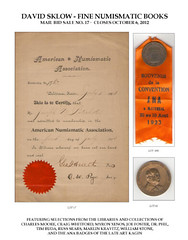 MAIL BID SALE NO. 17 CLOSES OCTOBER 6, 2012
MAIL BID SALE NO. 17 CLOSES OCTOBER 6, 2012
SELECTIONS FROM CRAIG WHITFORD, CHARLES MOORE, WILLIAM STONE, JOE FOSTER, LARRY JOHNSON, DR. PHIL, BILL FIVAZ AND MYRON XENOS WORKS ON U. S. AND WORLD NUMISMATICS
CATALOGS HAVE BEEN SENT TO ALL THOSE ON OUR MAILING LIST
Featuring selections from Craig Whitford to include many unique and never before offered collectibles & ephemera from the ANA, Frank H. Stewart, Francis E. Spinner and J.S.G. Boggs. The Charles Moore Library continues with works on Canadian banking and world references. Two magnificent one lot consignments feature the rare three piece medal set of the ANA Centennial struck in Gold, Silver & Bronze, and a Coin Gold example of the original ANA Membership Medal. The ANA Convention Badges of the late Art Kagin. Rare and unusual items from the shelves of the Myron Xenos Library, and many reference works of great importance, both U. S. and World.
Bidders may enter bids by mail, telephone, email or fax. The sale closes at 8pm mountain time, October 6, 2012. Note, any bids left on our answering machine or sent by email or fax on or before midnight will be accepted.
View our catalog on-line: www.finenumismaticbooks.com or request a hard copy at no charge
DAVID SKLOW – FINE NUMISMATIC BOOKS
P.O. BOX 6321
COLORADO SPRINGS, CO 80934
TEL: (719) 302-5686
FAX: (719) 302-4933
numismaticbooks@aol.com
www.finenumismaticbooks.com
We are seeking numismatic literature consignments for future auctions. Please contact us for terms.
NEW BOOK: AMERICAN SILVER EAGLES: A GUIDE TO THE U.S. BULLION COIN PROGRAM
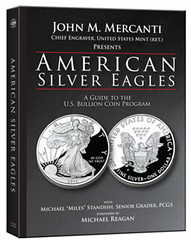 Whitman Publishing announces the release of American Silver Eagles: A Guide to the U.S. Bullion Coin Program, by John M. Mercanti, retired chief engraver of the United States Mint, and Michael “Miles” Standish, senior grader at PCGS. The 168-page hardcover book will be available November 20, 2012, online and from bookstores and hobby retailers nationwide. It can be pre-ordered at www.Whitman.com. The retail price is $29.95.
Whitman Publishing announces the release of American Silver Eagles: A Guide to the U.S. Bullion Coin Program, by John M. Mercanti, retired chief engraver of the United States Mint, and Michael “Miles” Standish, senior grader at PCGS. The 168-page hardcover book will be available November 20, 2012, online and from bookstores and hobby retailers nationwide. It can be pre-ordered at www.Whitman.com. The retail price is $29.95.
The hugely popular .999 fine one-ounce American Silver Eagle coin is collected by numismatists, stockpiled by investors, and treasured by silver buyers throughout the United States and around the world.
Now, no less an expert than John M. Mercanti—the designer of the coin’s reverse—shares his unique insight and perspective on these beautiful pieces of Americana.
To create this book, Mercanti has drawn on nearly 40 years of experience working in the U.S. Mint, starting in 1974 as a sculptor-engraver and culminating with his 2006 appointment as the Mint’s 12th chief engraver (supervisor of design and master tooling development specialist). Mercanti is joined by Miles Standish, vice president and senior grader of the Professional Coin Grading Service (PCGS), who has studied and graded the finest, rarest, and most valuable coins in the world.
These two experts bring together diverse elements—technical and artistic, historical and current, market-driven and hobbyist—to make American Silver Eagles a valuable addition to any numismatic bookshelf.
“Collectors and investors have purchased more than 300 million American Silver Eagles since 1986,” said Whitman publisher Dennis Tucker. “This is the first book-length study of these popular coins.”
Contents include:
- A foreword by Michael Reagan, whose father, President Ronald Reagan, signed the legislation that authorized the American Silver Eagle.
- Chapter 1: The United States’ entrance into the modern bullion market.
- Chapter 2: Mercanti’s behind-the-scenes history of the American Silver Eagle, its design development, the minting process, and other elements of the coinage series.
- Chapter 3: A detailed date-by-date study, plus varieties and sets, with high-resolution photographs, rarity information, values, certified-coin populations, surface and strike characteristics, market details, packaging information, issue prices, and more.
- Chapter 4: An illustrated overview of other coins in our nation’s bullion program.
- Plus: Compiled charts for easy coin-by-coin comparisons; a glossary of numismatic terms; and an index for looking up information.
- And: A richly illustrated eight-page gallery and catalog of John Mercanti’s coinage and medal designs.
American Silver Eagles: A Guide to the U.S. Bullion Coin Program By John M. Mercanti and Michael “Miles” Standish Foreword by Michael Reagan 168 pages, hardcover, 8.5 x 11 inches Fully illustrated in color ISBN 0794838049 Retail $29.95
NEW BOOK: OPHTHALMOLOGIA OPTICA ET VISIO IN NUMMIS
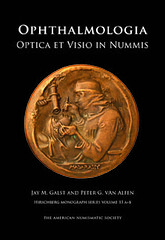 Ophthalmologia Optica et Visio in Nummis
(Ophthalmology, Optics and Vision in Numismatics)
Ophthalmologia Optica et Visio in Nummis
(Ophthalmology, Optics and Vision in Numismatics)
Hirschberg History of Ophthalmology Supplement Series 13
by Jay M. Galst and Peter G. van Alfen (2013)
Hardcover, 574 pp. full color illustrations throughout ISBN-13: 978 089722 323 2 List Price: US $285.00 Pre-publication Price: US $180.00 no other discounts available.
This is a pre-order publication that is expected to ship in March 2013.
Published jointly by J.-P. Wayenborgh Verlag and the ANS, Ophthalmologia, Optica et Viso in Nummis catalogues roughly 1,700 objects in 14 chapters each of which focuses on a discrete topic, e.g., ophthalmologists, ophthalmological congresses, the blind (and their rehabilitation), optical instruments (including spectacles), and the eye as a symbol. Appearing as volume 13 in the supplemental series to Julius Hirschberg’s History of Ophthalmology, the book also serves to situate the objects within the larger historical context of the ophthalmological and optical disciplines.
To order, see: numismatics.org/Store/Ophthal
 Inspired in part by Frederick C. Blodi’s (1986) volume in the Hirschberg history of ophthalmology series dealing with postage stamps depicting ophthalmologists, related scientists, medical researchers, and the eye in general, we have sought to create a work that will be of use not only to those with interest in the medical and optical fields, but also to numismatists. In general, we have followed Blodi’s arrangement and topics, so that users of both volumes will be able to readily compare similar subjects across the two media.
Inspired in part by Frederick C. Blodi’s (1986) volume in the Hirschberg history of ophthalmology series dealing with postage stamps depicting ophthalmologists, related scientists, medical researchers, and the eye in general, we have sought to create a work that will be of use not only to those with interest in the medical and optical fields, but also to numismatists. In general, we have followed Blodi’s arrangement and topics, so that users of both volumes will be able to readily compare similar subjects across the two media.
Like Blodi, we have been broad in our selection of topics, hoping to incorporate as much of the wide range of material relating to ophthalmology, its history, organizations and practitioners, including scientists whose impact on ophthalmology and optics was significant; optical firms and opticians; those who have lost total or partial sight and their rehabilitation; and, of course, the eye in its many symbolic and mythical uses. Casting the net wide in this way, we have captured a sizeable body of numismatic material. Generally, we have tried to be as inclusive and complete as possible, so that, for example, our first chapter I on ophthalmologists includes every object on this subject that we are aware of having searched private and public collections, and a range of publications. This same level of inclusiveness holds true for chapters III, V, VIII, IX, X, XI and XII as well.
Where the subject matter itself is vast, such as in the case of celebrity scientists, like Benjamin Franklin (inventor of the bifocal lens) as in chapter IV, or in objects pertaining to the eye as a symbol as in chapter XIII, we have exercised judicial exclusion, selecting items that best represent the subject or that are numismatically important. Likewise in chapters II, VI, VII, and XIV.
Within each chapter the subjects are arranged chronologically, unless otherwise noted. Each subject has a brief biography or description, followed by a catalogue of items. The catalogue information includes the issuer and/or mint, physical features, and detailed descriptions of what appears on the obverse and reverse of the object. With only a few exceptions (as noted), all the catalogued items are illustrated at or approximately 1:1 scale. Because a number of the individuals and organizations discussed here appear on multiple items appearing in different chapters, we have adopted a numbering system for each item that allows for easy (cross-) referencing.
Because of this general abundance of medicina in nummis (i.e., numismatic items pertaining broadly to medicine), there have been a number of important collections put together by physicians or surgeons that have sought out all medical related numismatic items or portions thereof. The most notable of these are the collections of Dr. Horatio Robinson Storer, now held at Harvard University, Dr. Josef Brettauer, now held at the University of Vienna, and Dr. Henry Barton Jacobs now held at the Evergreen House (Johns Hopkins University).
As part of his numismatic pursuits, Storer produced a catalogue of his collections, which was edited and published by his son Malcom (1931). Brettauer’s collection was catalogued by E. Holzmair (1937), while the Jacobs’ collections, along with that of several other medically related numismatic items donated to Johns Hopkins, was catalogued by S.E. Freeman (1964). However, due to the costs of photography and printing comprehensive reproductions of numismatic items was prohibitive until relatively recently. For this reason, these important catalogues illustrated only a small fraction of the items listed or discussed, which sometimes has led to confusion. Since the ability to see the object is often as important as a description of what appears on it, we have, with only a few exceptions, illustrated all items we list, including many not illustrated in the catalogues of the Storer, Brettauer, and Jacobs collections.
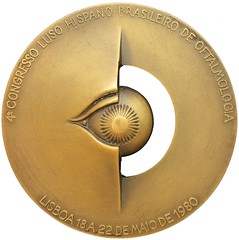
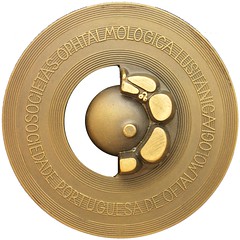
Regardless of illustrations, together these catalogues represent the core of important references for medicina in nummis, which has been greatly augmented by other catalogues and studies to the point that a comprehensive bibliography for the subject, compiled by Hubert Emmerig (University of Vienna, Institut für Numismatik und Geldgeschichte), runs over 60 pages.
To view all of the images on Flickr, see: www.flickr.com/photos/coinbooks/sets/72157631602221961/show/
NEW BOOK: A HISTORY OF THE CANADIAN DOLLAR
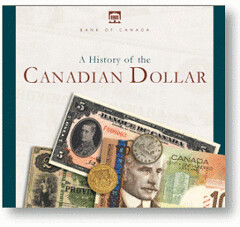 The history of Canada’s money provides a
unique perspective from which to view the growth
and development of the Canadian economy
and Canada as a nation. Building on an earlier
edition, this expanded History of the Canadian
Dollar, traces the evolution of Canadian money
from its pre-colonial origins to the present day.
Highlighted on this journey are the currency chaos
of the early French and British colonial period, the
sweeping changes ushered in by Confederation in
1867, as well as the effects of two world wars and
the Great Depression.
The history of Canada’s money provides a
unique perspective from which to view the growth
and development of the Canadian economy
and Canada as a nation. Building on an earlier
edition, this expanded History of the Canadian
Dollar, traces the evolution of Canadian money
from its pre-colonial origins to the present day.
Highlighted on this journey are the currency chaos
of the early French and British colonial period, the
sweeping changes ushered in by Confederation in
1867, as well as the effects of two world wars and
the Great Depression.
The book chronicles the ups and downs of the Canadian dollar through almost 150 years and describes our dollar’s relationship with its U.S. counterpart. It also examines the forces that led to the adoption of the dollar as our currency during the nineteenth century, instead of the pound, as well as the factors that led Canada to move from the gold standard in the 1920s, to the Bretton Woods system of fixed exchange rates in the 1940s and, ultimately, to a flexible exchange rate regime in 1970.
Finally, on the seventieth anniversary of the establishment of the Bank of Canada in 1935, at the height of the Great Depression, this book examines the formation of Canada’s central bank and its ensuing quest for a monetary order that best promotes the economic and financial welfare of Canada. While its tactics have changed over the years, the Bank’s enduring goal has been the preservation of confidence in the value of money through achieving and maintaining price stability.
You can download the complete publication.
Print copies are available at Can$8 each (plus 5% GST for Canadian residents and provincial tax where applicable) from:
Publications Distribution
Bank of Canada
Ottawa, Ontario
K1A 0G9
For more information, see: A History of the Canadian Dollar - by James Powell (www.bankofcanada.ca/publications-research/books-and-monographs/history-canadian-dollar/)
Dan adds:
The book is also available in French on the same site:
www.banqueducanada.ca/publications-et-recherches/livres-et-monographies/
dollar-canadien-perspective-historique/
REPUBLISHED : GNECCHI'S I MEDAGLIONE ROMANI
Rasiel "Ras" Suarez writes:
Gnecchi's "I Medaglione Romani" has been digitally republished on coinvac.com. This important reference lists over 3,000 Roman medallions and despite now turning 100 years since printing is still frequently consulted by numismatists studying the Roman era.
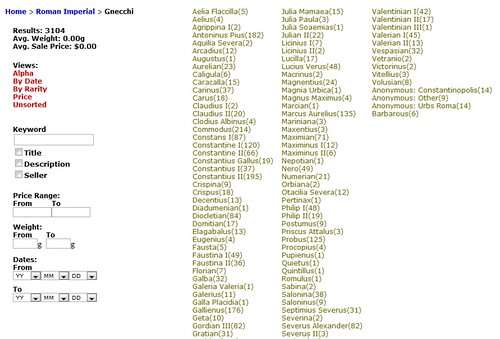
To visit the CoinVac site, see: www.coinvac.com
THE BOOK BAZARRE
THE LATE LEN HARSEL'S NUMISMATIC LIBRARY
I have been assisting Len Harsel's widow, Sue, with cleaning out his basement office. It was almost as bad as my "black hole" but not quite there. Daryl Spelbring has also assisted Sue by selling his inventory. The major part of Len's numismatic library is still in the basement. Daryl and I have sold some of it but there are still at least one hundred references on the shelves.
I am leaving on October 3 for Viet Nam and will return in late February of next year. Sue is planning to sell the house and move into a condo sometime before March 1 of next year. Len's library will be put in storage once the house is sold. There are many references not on the 10+ pages listing of his library and many of them would surprise most of you. I was going through it a few days ago and picking out references Joe Boling wants and I kept coming across many more not on the list that I KNOW he would want in his library.
Please contact Sue at SueHarsel@aol.com to arrange for a time where you can go through Len's library and make offers to her. Many have the purchase price in them but many do not. Whatever references are left when I return next year, I will likely ship to the ANA Library for a donation, so see if you can add them to your library.
Sue is going to be in California for the first half of September and when she returns, I will have only a couple of weeks before Phung and I depart for Viet Nam for five plus months. You can contact me at Howard@SEAsianTreasury.com (this is a new email address to contact me) and I can email you the library list.
VOCABULARY WORDS: PORTUGALÖSER AND PORTUGUEZ
Last week Tom Wetter asked:
What is a Portugalozer? Google is stumped. Thomas Elder has one catalogued in his November 1934 sale. His exact listing is "PORTUGALOZER OF JOHN III".
First to respond was Ron Guth, who writes:
A Portugaloser is a generic term for a 10 ducat gold coin. Here's a link to a 1991 article in the Numismatist about the Portugueses and their "Portugaloser" derivatives:
Portuguese Coins in the Age of Discovery
(www.conteudos.easysite.com.pt/files/48/ficheiros/historia_monetaria/
TheNumismatist1991.pdf)
Tom DeLorey writes:
I would hazard a guess that the "Portugalozer" catalogued by Tom Elder was a "Portugal Cruzado," which John III did issue.
Ken Spindler of San Diego, CA writes:
I trust you will receive more informative and authoritative responses, but I've heard the term before and see that a Portugalöser was another name for a gold 10-ducat trade coin issued at least by German states and Denmark in the 17th Century. I have the impression the name alluded to acceptability (meeting a specific standard) for international trade, apparently in Portuguese colonies. This is certainly subject to correction!
Eric Vanhove writes:
Stater. Tetrodrachmus. Eene Grieksche en Hebreeuwsche Munt, vanwelke ook in de Schriften van het Nieuwe Testament gewag gemaakt wordt. Een van Zilver woog gemeenelyk een Loot en deed 12 Grosschen. Die van Goud, zynde in het Joodsche Land niet gemunt, wierd naar den Konig genaamd. weens Beeld daarop stond. Dus had men, by voorbeeld: Darici, Philippici en Alexandrici, en sommigen waren zoo groot als de portugalozer. Anderen woogen 2,3, 4 of meer Ducaten. ....
Google Translate (plus me for a little context):
Stater. Tetrodrachm. A Greek or Hebrew coin mentioned in the scriptures of the New Testament. One of silver weighed roughly the weight of 12 Groschen. Those of gold were not minted in Jewish lands, were minted in the name of the king, whose image on it appeared. There were, for example, Darici, Philippici, and Alexandrici (Darius, Philippus, and Alexander?), some were as large as the PORTUGALOZER. Others weighed 2, 3 4 or more ducats.
No, there is no entry in the dictionary for Portugalozer. There is a Portuguese king John III (ruled 1521-1557)
To access the Google Books item, see:
Jim Duncan quotes Ewald Junge from his "World Coin Dictionary" (p203):
PORTUGALÖSER A large gold coin based on the portuguez and struck to the value of 10 ducats in a number of German cities, usually for commemorative purposes. The most extensive is that struck in Hamburg from 1553-1673. There is another Hamburg series, dating from the foundation of the city bank in 1667 until the mid-19th century, but these "Bankportugalöser", as they are called, are more properly classed as medals.
PORTUGUEZ A large Portuguese gold coin, to the value of 10 cruzados, struck from 1499-1557. It commemorated in its legend Portuguese discoveries, conquests and trade.
Henry Goodman writes:
The Portugalöser is a piece originally struck in gold of the value of 10 Ducats, which circulated as a coin, but served chiefly as a complimentary presentation at weddings, births, and similar occasions. From the sixteenth century the Portugalöser has been struck in Hamburg.
The name was derived from the large Portuguese crusados which were current in Germany among other foreign coins at that time. Since the state reserved itself the exclusive right of issuing coins, the banks in Hamburg issued Portugalöser in gold and silver, but rather in the style of medals featuring city views and shipping ports. Bank Portugalöser's were also used as bullion minted at precise weights in order to assist banking transfers between Hanseatic League city states of the time.
More info can be found in the Davenport suite of Taler volumes as well as in the "Use of God's Name; Jehovah on Coins, Medals, Tokens, and Jetons" by Saul Needleman.
Ursula Kampmann writes:
I know all your readers will know what a Portugalese is - here the historical background, why it developed.
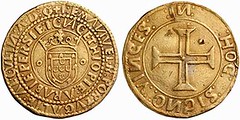 Emmanuel I (1495-1521). Português of 10 Cruzados n. d., Lisbon.
Emmanuel I (1495-1521). Português of 10 Cruzados n. d., Lisbon.
At the end of the 15th / beginning of the 16th century, today’s capital of Portugal, Lisbon, acquired a favoured position in the gold trade as a popular interstation. Italian merchants from Genoa or Venice bought gold in the Arab Maghreb that had been transported from the Sudan via the Sahara desert to the Mediterranean coastal towns. They paid with silver, only six times the gold weight. In the North, however, the gold was counterbalanced ten times the value of silver. What was easier than to travel the Atlantic route to the big commercial towns at the North Sea to sell the gold for plenty of money?
The most important reloading point became Portugal where the Arab money was recoined into Portuguese coins. These imposing gold coins worth 10 Cruzados were called Português. Their predecessors go back to 1340. In those days, tradesmen claimed that these Portuguese gold coins weighed as much as “100 Moroccan Doubloons”.
Under John II of Castile (1406-1454), these pieces grew to an enormous size; they were produced in weights up to 235 grams. Coins that big were of course never intended to serve as currency in everyday transactions. Basically, they were ingots in the shape of coins whose weight and purity were guaranteed by the national die and hence were easier to trade on the market. In the Northern cities these coin ingots were recoined into local currency or saved as an investment of stable value and hoarded for the case of need. Portuguese large gold coins were very popular in the rich commercial cities in Northern Europe.
To read the complete article, see: Gold for Portugal (www.coinsweekly.com/en/Gold-for-Portugal/8?&id=69&type=a)
Dave Alexander writes:
Portugaloeser were large and quasi-medallic gold pieces first struck by the Bank of Hamburg (Free and Hasseatic City of Hamburg in North Germany) for commemorative purposes. There were a variety of later issues. The term derives from the Portuguese gold 3,900 Reis, later increased to 4,000 Reis by King Manoel I (1495-1521) with later issues in the name of King Joao (John) III in 1521-1557. The coin's majestic size and weight made it an impressive vehicle for commemorative purposes.
Bruce W. Smith explains the different spellings. He writes:
It is usually spelled Portugaloser. It's actually a Portuguese gold coin, in this case issued by John III (ruled 1521-1557), which was actually called a Portuguez. The term Portugaloser refers to pieces of similar weight or size issued in parts of Germany, Transylvania, Poland and elsewhere, with a value of 10 ducats or 10 kronen. According to Frey's Dictionary of Numismatic Names (1917), these north European pieces were actually struck for presentation, not circulation.
Bruce also found this entry on the "Portugaleser", yet another spelling variant:
The name of this coin is German, and refers to Portuguese coins that made their way northward, such as this heavy gold coin worth ten cruzados, introduced in 1499 by Manuel I. It reflects the riches, above all in the form of gold from Africa, that flowed to Portugal as a colonial power. And its inscription is confident: "in hoc signo vinces" (in this sign [the cross] you will conquer). This impressive coin, which was well suited to being a present, was soon imitated in the north of Germany and Northern Europe. In Hamburg, where most of these "expatriate Portuguese" coins were minted, the name «Portugaleser» survives as a term for gold medals awarded for special purposes.
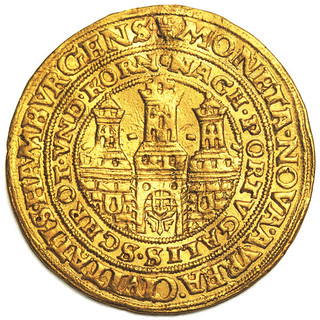
To read the complete article, see: Portugaleser (www.moneymuseum.com/moneymuseum/library/pictures/image.jsp?lang=en&ix=19&i=23)
Ralf Böpple writes:
"Portugalozer" is a misspelling of a coin from northern Germany called "Portugalöser" or "Portugaleser", which is an imitation of a gold coin that was issued in Portugal in the early 16th century. The main mint for the production of these numismatic items, which served as trade coins in the Baltic region, was Hamburg. Still today "Portugalöser" are issued there by the city council in the form of medals of honor.
The original listing seems to have been for a coin of John III (Joao in Portuguese), which would be the Portuguese king under which reign the first coin of this type was struck. So it's actually not the northern German imitation, but the Portuguese original, and as such a misnomer in the catalog ("portuguez" or "10 cruzados" would have been the right denomination).
Ron Haller-Williams writes:
PORTUGALOZER is one of the many spelling variants (such as podogloser, portugaleser) for PORTUGALOSER.
PORTUGALOSER: a 10-ducat gold coin (hence weight approx. 34.9 grams) of such places as Danzig, L=FCbeck, Magdeburg & Hamburg (North Germany) and Deventer, Zwolle (Netherlands), based on the gold Portuguez (10 cruzados) of Manuel I of Portugal (1495-1521), which was first struck c1499.
These "Portugalosers" were produced from c1550 until well into the eighteenth century, though the later ones (after 1693?) were more for commemorative or gift purposes than for circulation. Note: There are many replicas of these coins, which are mostly very rare. I hope this helps. The form PORTUGALOSER should be much easier to find, including in Friedberg.
Henk Groenendijk writes:
The obverse of a Portugalozer of Manuel I is depicted on a Portuguese commemorative coin of 1000 Escudos of 1983 (KM622).
An interesting booklet about the Portugalozer was issued in Lisbon in 1983. The Author is Antonio Miguel Trigueiros. The title is Moeda dos descobrimentos prestigio de Portugal no Mundo. In this book the original Portugalozer and several contemporary copies are illustrated. Places of issue were: Hamburg, Magdenburg, Luneburg and Lubec in Germany. Denmark, and Zwolle and Deventer in the Netherlands.
To read the earlier E-Sylum article, see: QUERY: WHAT IS A PORTUGALOZER? (www.coinbooks.org/esylum_v15n39a20.html)
MORE ON THE THIRD PHILADELPHIA MINT BUILDING
Regarding the image I slapped onto Pete Smith's item last week on the Third Philadelphia Mint building, Tom DeLorey writes:
Um, isn't that illustration the SECOND Philadelphia Mint?
Dave Lange writes:
Let me join who will likely be the many persons pointing out that the photo of the "Third Philadelphia Mint" actually depicts the Second Mint, which was demolished in 1903.
Devoted and careful reader Kay Olson Freeman writes:
You showed a photo of the demolished 2nd Philadelphia Mint, which was located Chestnut and Juniper Streets. Back in May 2010, we had a discussion of the present location of its rescued six Ionic columns. Pete Smith visited the 3rd Philadelphia Mint on Spring Garden Street from where the glass mosaics were taken to adorn the present 4th Mint.
Paul Gilkes was quoted in the September 9, 2012 E-Sylum as saying the glass mosaics were executed under the direction of "Louis B. Tiffany." The correct name is "Louis C. Tiffany" or Louis Comfort Tiffany.
Dave Hirt writes:
The item on the third Philadelphia mint on Spring Garden Street brought back memories to me. As a boy I went there to buy proof sets. A guard at the door would ask you "What do you want"? If the answer was to buy proof sets, he would direct you up a flight of stairs to a window where the proof sets were sold. As I remember the limit at that time was five sets.
Heath MacAlpine writes:
When I was in Philadelphia for the ANA convention in August, I hopped in the car and toured the sites of the various mints over the years. The first mint site is now occupied by a very large mid/late 20th century federal building, and the second mint site is the home of an early 20th century department store building, now a Macy's. I've attached some pics I took of the still standing third mint, now part of a larger community college complex.
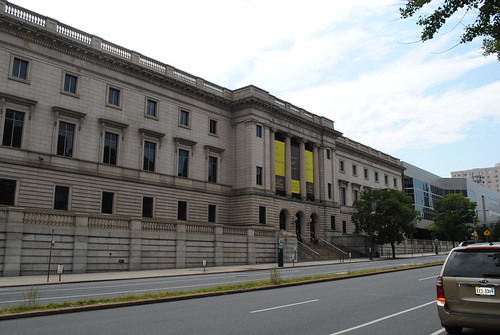
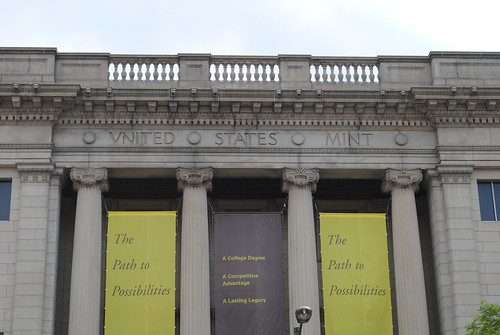
To read the complete article, see: A VISIT TO THE THIRD PHILADELPHIA MINT BUILDING (www.coinbooks.org/esylum_v15n39a11.html)
BEARDED MYSTERY MAN REVEALED: PETER LAMPINEN
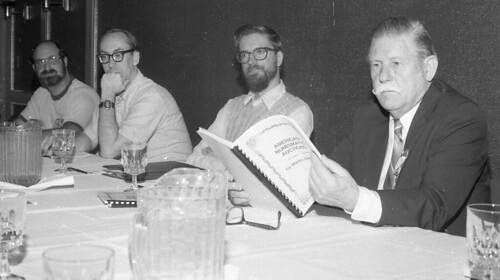
P. Scott Rubin, Martin Gengerke, Peter Lampinen, Vincent Alones
1988 Grand Central show
Kerry Wetterstrom writes:
I just wanted to confirm Alan Stahl's comment that the unnamed bearded fellow next to V. Alones in George Cuhaj's photo is Peter Lampinen. Peter spent about 20 years as a cataloger for the Classical Numismatic Group, here in Lancaster, and Peter is a now a self-employed antiques and coin dealer in Lancaster.
Before moving to Lancaster, Peter lived in New Jersey, and was a regular attendee at most New York City area coin shows.
To read the earlier E-Sylum articles, see:
E-SYLUM READERS REMEMBER VINCENT ALONES
(www.coinbooks.org/esylum_v15n35a12.html)
NOTES FROM E-SYLUM READERS: SEPTEMBER 2, 2012: The Un-Named Bearded Wonder
(www.coinbooks.org/esylum_v15n37a13.html)
NOTES FROM E-SYLUM READERS: SEPTEMBER 9, 2012: Unknown Bearded Numismatist Mystery Continues
(www.coinbooks.org/esylum_v15n38a11.html)
NOTES FROM E-SYLUM READERS: SEPTEMBER 23, 2012
The Mint's 1906 Janvier Reducing Lathe
John Dannreuther writes:
I had meant to write you about the Janvier reducing lathe, as it was discussed in a previous E-Sylum. Roger Burdette did it for me, as he notes it was delivered to the Mint in 1906, not 1907 as noted in the previous article.
I don't know whether it has been corrected, but when I was last there (a few years ago, as I did not make it during this year's ANA), the plate at the Mint says it was delivered in 1905!
To read the earlier E-Sylum article, see: ON THE PHILADELPHIA MINT'S JANVIER LATHES (www.coinbooks.org/esylum_v15n39a13.html)
Canada's Ancient Arabic Coin Connection
Dave Alexander writes:
The image with the Arabic gold coin article appears to consist of gold-plated modern Canadian coins! The text describes vastly different Islamic coins of great antiquity!
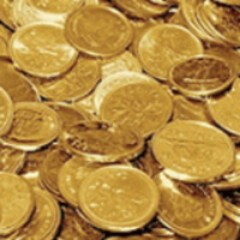 By God, you're right! Goes to show you - never trust an editor to put a picture with an article...
-Editor
By God, you're right! Goes to show you - never trust an editor to put a picture with an article...
-Editor
To read the earlier E-Sylum article, see:
COIN SMUGGLING ATTEMPTS THWARTED IN EGYPT AND ABU DHABI
(www.coinbooks.org/esylum_v15n39a25.html)
More On Sotheby's 1999 S.S. Central America Sale
Bob Evans writes:
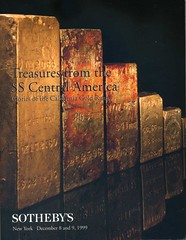 Eric Shena states that the Sotheby's sale catalog of the S.S. Central America treasure is the catalog (and sale) that "never was." The sale actually took place, using the same catalog, but at a later date, after some of the legal morass had ebbed. The sale was the following July (2000) I believe. By the way, the sale and the catalog included coins and native gold (gold dust and nuggets) as well, not just ingots as were so colorfully portrayed on the catalog cover and in several "still lifes" within.
Eric Shena states that the Sotheby's sale catalog of the S.S. Central America treasure is the catalog (and sale) that "never was." The sale actually took place, using the same catalog, but at a later date, after some of the legal morass had ebbed. The sale was the following July (2000) I believe. By the way, the sale and the catalog included coins and native gold (gold dust and nuggets) as well, not just ingots as were so colorfully portrayed on the catalog cover and in several "still lifes" within.
To read the earlier E-Sylum article, see: WAYNE'S NUMISMATIC DIARY: SEPTEMBER 16, 2012 (www.coinbooks.org/esylum_v15n39a18.html)
Charges Filed In Lava Hoard Case
Michel Amandry, current director of the Paris Cabinet of Medals, former president of the International Numismatic Commission was charged on May 30 in the case of the Lava hoard. Lava hoard consists of gold coins of third century. Police found last year a gold patera, part of the treasure. According to French procedures, he is considered innocent until the final judgment.
To read the earlier E-Sylum article, see:
25-YEAR-OLD FRENCH UNDERWATER GOLD THEFT RESOLVED
(www.coinbooks.org/esylum_v13n44a22.html)
Video Tributes to David W. Akers
www.coinweek.com/featured-news/numismatic-tribute-to-david-w-akers-ana-philadelphia-2012/
www.coinweek.com/featured-news/a-video-tribute-to-numismatist-david-akers/
To read an earlier E-Sylum article on Akers, see:
DAVID W. AKERS, 1941-2012
(www.coinbooks.org/esylum_v15n31a13.html)
The Roper Sale and the Roper-Brown 1793 Cent
I always like to read about the Roper sale. My copy is one of the treasures of my collection. I purchased it in 1977 at the Katen Wylie sale as a floor bidder. A few years later in 1981 George Kolbe had a sale with two copies. I bid well above the estimate on both, but was not successful.
In the October 1868 American Journal of Numismatics, J.N.T. Levick compiled a table of the sales of 1793 cents. He mentioned the first record he found was at the Roper sale, where a 1793 was sold for 10 cents. He added that the condition may have been poor. Some months later in the May 1869 issue a letter from the buyer, Ammi Brown was published. He stated the the coin was as fine as when struck, and was knocked down to him on his first bid. He had since sold his coins, but remembered that coin had "15 rings".
To read the earlier E-Sylum article, see:
FIRST U.S. COIN AUCTION CATALOG: THE 1851 LEWIS ROPER SALE
(www.coinbooks.org/esylum_v15n39a10.html)
President Nominates Mint Director
President Barack Obama has announced his intent to nominate Bibiana Boerio for director of the United States Mint.
Boerio served as special adviser to the President and CEO of the Detroit Regional Chamber of Commerce from March 2011 to February 2012.
From2008 to 2010, Boerio was the Chief of Staff for Congressman Joe Sestak.
Previously, Boerio worked at Ford Motor Company for over 30 years, including as managing director for Jaguar Cars, Ltd. from 2004 to 2007, director of Finance and Strategy for Ford International Operations from 2003 to 2004, and executive vice president and chief financial officer for Ford Motor Credit Company from 2000 to 2003.
To read the complete article, see:
Obama Nominates New Mint Director
(www.numismaster.com/ta/numis/Article.jsp?
Back when we started the project, I spent some quality time with the RCM’s Compliance and Intellectual Property officers, making sure that Whitman’s i’s were dotted and our t’s were crossed. Our Canadian cousins take a different approach than the U.S. Mint when it comes to images of their coins (historical designs as well as modern). Permission to publish the images has to be licensed --- even, interestingly, if the publisher uses its own photographs.
There’s plenty of precedent in Canadian law for this kind of protection of the Royal Canadian Mint’s intellectual property. In other words, the musician, Mr. Gunning, isn’t jumping through any hoops that other publishers haven’t had to jump through over the years. For the Guide Book of Canadian Coins and Tokens, Whitman’s compliance is established on the copyright page, where we note Canadian coin images © 2012 Royal Canadian Mint—All Rights Reserved / Images de pièce © 2012 Monnaie royale canadienne—Touts droits réservés.
The closest United States equivalent that immediately comes to mind: the U.S. Postal Service similarly protects its stamp designs as intellectual property, and requires licensing for publication (whether the USPS provides the image itself or the publisher uses its own). The Postal Service, of course, is a bit different from the U.S. Mint; it executes its licensing agreements as “an Independent Establishment of the Executive Branch of the Government of the United States,” rather than as part of a federal department (as the Mint is part of the Treasury Department). The USPS’s contracts are almost amusingly thorough—for example, in Whitman’s 100 Greatest American Stamps, we had to agree not to use any stamp images “in a manner that is likely to be viewed as violent, sexually provocative, offensive, obscene, in violation of hate crime laws, or otherwise likely to shock or offend the community.”
Who knew our hobbies could be so controversial and outrageous!
Joe Boling adds:
Now we know why there is no image of a Canadian cent on the "end of the cent" commemorative - the seigniorage earned by the production department is not enough to pay the royalties demanded by the art department! $1200 for every 2000 copies? Highway robbery.
To read the earlier E-Sylum article, see:
NOTES FROM E-SYLUM READERS: SEPTEMBER 16, 2012: Musician vs Royal Canadian Mint
(www.coinbooks.org/esylum_v15n39a12.html)
Tom Casper writes:
I enjoyed the article in the Sept. 16, 2012 issue of The E-Sylum on the Sioux City Corn Palace Medals. I was unaware this piece was struck by the U.S. Mint. I thought your readers might like to see the reverse of this medal so I have included a scan. These Sioux City Corn Palace medals (issued 1887-1891) are listed in the book, Standard Catalog of United States Tokens by Russell Rulau. He noted that all are holed and were apparently issued to be suspended from badges. I have also sent scans of one unholed piece from the Sioux City Corn Palace. It is from 1891 and unlisted by Rulau.
Bob Jesinger writes:
I purchased the attached 1889 Sioux City Corn Palace medal (presumed unlisted so called dollar) in the recent Hot August Auction by Holabird & Kagin.
It appears to be white metal, 36.5mm, and weighs 15 grams. It does not have any edge markings.
To read the complete article, see:
SIOUX CITY CORN PALACE FESTIVAL MEDALS
(www.coinbooks.org/esylum_v15n39a26.html)
Richard Gascoyne, an elder of the First Presbyterian Church, Albany, sent us an image of the church's Church Penny (see below). He writes:
It is quite worn, but that's because Alexander Hamilton rattled it around in his pocket for so long; John Jay, too. The church just kept selling it over again. Thanks greatly to Katie De Silva for her leads to other local paper scrip and especially for the 1898 reference in Ladies' Home Journal on the concept of a tithing penny. A friend in England who is Minister of Finance for the Archdiocese of Newcastle (Church of England) has a memory of tithe pennies in the church.
How much was a penny worth in 1790? What
was an acceptable offering for the collection
plate at that time? Not easy questions.
Prior to 1792 everyday business was conducted
using a hodge-podge of tokens, coins, medals,
foreign currency, and counterfeits issued by
private individuals and private mints inside and
outside of America. Imagine reaching into your
pocket and retrieving this mess. Which ones go
into the collection plate? You guess! Imagine
the expression on the Church Treasurer’s face
when he tallies the collection. How do you run
a church with this “money?”
In 1792 the US Treasury started minting coins.
Alexander Hamilton, a frequent attendee of our
church and good friend of Eliphalet Nott (pastor
of FPC, 1798-1804) became the first Secretary
of the US Treasury and was instrumental in the
founding of a national bank. Did he have input
into FPC’s decision to mint a coin?
The British Pound Sterling was the most
universal exchange. The Albany Church
Penny, twelve to a shilling, was in 1790 worth roughly the same as, or a little less than, the British
penny.
We are assuming that members of the
congregation bought these pennies to put in
the collection plate weekly, and that the
purpose was to get money from congregants
up-front whether or not they came to church
and put them in the plate, and to recycle and
resell the coins that were returned and put in
the collection plate. And also, perhaps more
important, to get a reliable and readily
accepted currency (British sterling) in the
hands of the Church Treasurer, who, in turn,
gave the contributor Church Pennies to drop
into the collection plate.
On January 27, 2013 at a ceremony at
Albany Institute of History and Art, our penny
will be presented to the Institute. It is an
artifact that speaks of the history of our local
congregation, our city, our state, and our
nation. Reserve the date!
To read the earlier E-Sylum articles, see:
QUERY: ALBANY CHURCH PENNY INFORMATION SOUGHT
(www.coinbooks.org/esylum_v15n38a12.html)
For some coin collectors, it’s the peace silver dollar. For others, it may be the wheat penny or the buffalo nickel. But for Conway numismatist Wesley Smith, it’s the fractional currency of the Civil War era that sparks his interest.
Smith wants to share his U.S. Fractional Currency Series collection with the public and has set up an exhibit at the Faulkner County Library, 1900 Tyler St. in Conway. The exhibit will continue through Saturday.
Smith said the U.S. Treasury first issued fractional-currency notes in 1862 as a way to alleviate a coin shortage caused by Americans hoarding everyday staples and supplies, including coins, during the Civil War. These paper notes, which were printed in denominations of 3, 5, 10, 15, 25 and 50 cents, were used to make small change in the absence of coins until 1876.
Smith, who is self-employed, said his current collection, which also includes some early coins from 1792, took three years to assemble. The piece de resistance in his collection is a 15-cent note that bears the images of Civil War Gens. Grant and Sherman.
Smith said 9,000 of the Grant-Sherman notes were printed but never circulated. However, in his exhibit, he tells “The Story of the Midnight Ride,” in which a select few of these notes were taken and circulated. Smith believes he has a note that was circulated.
“This exhibit is for the people,” Smith said.
In his exhibit, Smith asks those viewing the panels of currency to take a survey. He also has printed materials available to help the viewers as they move from panel to panel.
From the Faulkner County Library, Smith hopes to take his exhibit on tour, eventually ending at the Smithsonian Institute in Washington, D.C. He hopes to include several stops along the way, including the William J. Clinton Presidential Library in Little Rock, the Lincoln Museum in Hodgenville, Ky., and the Lincoln Memorial University and Museum in Harrogate, Tenn. He said he pays respect to Lincoln since he was president during the time the Fractional Currency Series was put in place.
To read the complete article, see:
Coin collector displays fractional-currency exhibit at library
(www.arkansasonline.com/news/2012/sep/23/coin-collector-displays
Paul Hybert writes:
In the recent E-Sylum, you asked about Walter Ostromecki's planned presentation "Paranormal Coins & Currency" at the Dallas National Money Show. You had asked the same question after the Denver NMS late this spring, where version 1.0 of the presentation had been given.
At the Central States show in April, Walter presented version 0.0 of the program -- a presentation summarized in the May newsletter.
Back then, I used "Paranormal Images on Coins & Currency" as the title; more accurate, but has less sizzle as a headline.
Walter started the presentation by asking us, “What does paranormal mean?” The general concensus was anything not in our physical reality, which can be simply stated as out-of-body. The program focused on examples from the more modern world; the mythological figures of the Greek, Roman, and other ancient civilizations is for another speaker, place, and time. The first topic was dragons.
Although dragons appear in both eastern and western cultures, they are viewed quite differently: good and benevolent in the east, and mostly as fire-breathing evil in the west. The Chinese dragon is the highest ranking creature in the Chinese animal heirarchy, and it is the only mythological creature of the twelve represented in the Chinese calendar. At one time, the dragon was strongly associated with the emperor, and hence power and majesty; tradition holds that children born in a year of the dragon will have luck, success, and power.
A number of pieces were shown, starting with an undated 10 tiao note from a warlord in China’s Jilin Province; it has serpentine dragons within the outer frame. A copy of a $1 sight banknote has a smiling dragon flying over ships at sea, protecting them and providing good weather; it has no wings, as is typical for eastern dragons, but it still flies — magic! The same general design also appeared on a 1938 1 yuannote from the Japanese occupation of Manchuria. Examples of dragons on Japanese coins and notes from the 1890s concluded the examples of eastern dragons.
A 1922 10 pfennig notgeld from Braunschweig includes a winged dragon, with smoke wisps from its mouth, among a group of creatures around a walking ex-soldier. The alligator type of mouth adds to its sinister appearance. The dragon on a 50 pfennig notgeld is multiheaded but smaller; a soldier clad in only a loin cloth and carrying only a sword is fighting it, quite successfully too, as some of the heads have been cut off!
Not all German dragons were references to its defeat in World War I; a 1904 5 mark imperial treasury banknote (Reichskassenschein) has a winged dragon with the obligatory wisp of smoke from its mouth. Probably the best known of the western dragon stories is that of Saint George slaying the dragon. Walter recounted one of the folklore tellings of the brave horseman, armed with a lance, defeating the dragon, saving a princess, and converting the kingdom to Christianity. In the middle ages, the action took place in places with various names, situated in modern Libya, Syria, and Georgia among others. Examples on coins include the 1857 half penny token from the Bank of Upper Canada, to the 1892 crown from Great Britain; both based upon Pistrucci’s famous rendition. So much for dragons — on to vampires and devils!
To read the complete newsletter, see:
http://www.chicagocoinclub.org/chatter/2012/May/
(www.chicagocoinclub.org/chatter/2012/May/)
Joe Boling writes:
The paintings on pennies of Jacqueline Lou Skaggs remind me of the numismatic art of Shellee Graham, who is planning to have a non-competitive exhibit of some of her pieces at the ANA National Money Show in Dallas next month.
For more information, see:
www.shelleegraham.com./bigmoney.html
To read the earlier E-Sylum article, see:
FEATURED WEB PAGE: PAINTINGS ON PENNIES
(www.coinbooks.org/esylum_v15n39a31.html)
As a cash-strapped student at Purdue University, Robert W. Julian decided to write his first magazine article about collectible coins to earn money to buy $100 worth of books on U.S. coins.
The books weren’t even for himself. He intended to mail them to coin museum curators in Leningrad, Russia, in exchange for microfilm documenting the history of certain Russian coins.
Now 73, Julian has written more than 1,300 articles for coin magazines and journals and published one book on rare coins in 1977. The American Numismatic Association named him its Numismatist of the Year at its annual convention in Philadelphia last month.
Julian is the 17th recipient of the award, which was established in 1995.
During the nomination period, Julian received a phone call from a coin-collecting friend, he said, asking permission to nominate him for the award.
“He has spent hundreds of hours at the National Archives, extracting information that he then passes to the collecting community,” wrote Joseph E. Boling in his nomination, quoted in the Aug. 28 issue of Numismatic News. “His carefully researched treatises, most based on primary sources, have changed our common knowledge.”
Although Julian thought he had “zero” likelihood of being chosen, he gave Boling the go-ahead and thought little more about it.
“And I got it,” said Julian. “I was very surprised.”
Julian has received more literary awards from the association than any other author, including induction into the association’s Numismatic Hall of Fame in 1998 and a joint award from three prominent numismatic associations in 2002, according to an article published in Numismatic News, a publication to which Julian contributes. He also writes for The Numismatist.
To read the complete article, see:
Logansport coin researcher honored for lifetime of magazine articles
(pharostribune.com/local/x1023286356/Logansport-coin-researcher
Recently I obtained R.W. Julian's 5 bronze satirical medals. There is so little information on the internet about them. I was very surprised. The main article I saw was by Steve Pelligrini.
His medals are the silver ones though while mine are the bronze versions.
In photographing everything some unique aspects of the medals came to my attention.
The 1977 Media medal has the following inscription on the side "Medallic Art Co. Danbury, CT. - Bronze" (Before that text is the copyright symbol). The 1978 Medal, the Panama Canal Treaty Medal simply has the word "Bronze" on its side (No copyright symbol). The 1979 Medal, the Energy Medal, has the words "1979 Maco - Bronze" (following copyright symbol). The Defense Medal of 1980 has the words "1981 Maco - Bronze" (yes, 1981 following copyright symbol). The final medal, the Justice Medal has the words "1981 Maco Bronze" (following copyright symbol).
Every medal has information with it save the Defense Medal with General Macarthur. I assume that came with information, but I do not have it.
To view all of Travis's images, see:
www.thatchristianwebsite.com/julian/
The bar was filled with tungsten, which weighs nearly the same as gold but costs just over a dollar an ounce.
Ibrahim Fadl bought the bar from a merchant who has sold him real gold before. But he heard counterfeit gold bars were going around, so he drilled into several of his gold bars worth $100,000 and saw gray tungsten -- not gold.
What makes it so devious is a real gold bar is purchased with the serial numbers and papers, then it is hollowed out, the gold is sold, the tungsten is put in, then the bar is closed up. That is a sophisticated operation.
MTB, the Swiss manufacturer of the gold bars, said customers should only buy from a reputable merchant. The problem, he admits, is Ibrahim Fadl is a very reputable merchant.
Raymond Nessim, CEO Manfra, Tordell & Brookes, said he has reported the situation to the FBI and Secret Service.
To read the complete article, see:
Fake gold bars turn up in Manhattan
(www.myfoxny.com/story/19578206/fake-gold-bars-turn-up-in-manhattan)
A gold dealer in Manhattan's Diamond District on 47th Street discovered last week that an evidently certified gold bar was in fact more than 75 percent Tungsten.
Today we decided to follow up.
Ibrahim Fadl came to New York from Egypt in the mid-70s to earn a Masters in chemical engineering from Columbia University. He's almost certainly the only guy on 47th Street with the periodic table of elements hanging in his office:
Ten ounce bars are thicker, making them harder to detect if counterfeited — the standard X-rays used by dealers don't penetrate deep enough.
Plus, the bars had been sealed and numbered. So whoever did this must be running an extremely sophisticated operation, Fadl said.
"It's a shame. This business is built on trust."
The FBI and Secret Service are investigating the incident, but Fadl wonders whether it's within their power to curb the practice, given the incentives involved.
To read the complete article, see:
How A Manhattan Jeweler Wound Up With Gold Bars Filled With Tungsten
(www.businessinsider.com/tungsten-filled-gold-bars-found-in-new-york-2012-9)
The hoarding of Uncirculated rolls became a new obsession in the marketplace. Many thought that holding quantities would eventually yield big profits. Promoters and scam artists touted the value of holding rolls, using arguments that were as foolish as their recommendations. Their goal was to create pyramid schemes to loot the buyers.
I remember at a trade show when an “investor-collector” walked by my display bourse table and looked it over. He asked: “Mr. Stack, where are your rolls?” I said, “We do not deal with rolls,” to which he responded, “Don’t you know what is rare?” He then tried to explain the logic that led him to that reply. He explained: “Take the 1950-D nickel. Only 2.6 million were struck! That means that there are only 65,000 rolls, and that means there are only 650 bags, and “you know Mr. Stack, that anything that there are only 650 of is RARE!” I was shocked! I stopped our conversation there rather than pursue that foolish logic!
One of the great scams that occurred in the roll investment era was the sale of “sealed rolls” in “original bank wraps.” One could look at the ends of a roll and often determine the date and the mintmark. But the scam artist preached: “If you open it or break the seal, the value of the roll will drop immediately.”
What had occurred was one of the greatest frauds perpetrated on the coin collecting public. Advertised “sealed rolls” didn’t always mean an original mint sealed roll. The machinery to repackage coins in a bank type roll and seal it was readily available and as long as they remained sealed, no one could tell what was in the roll. We found, as many others did, that rarer coins would be placed at the ends of the roll, but the center would be stuffed with commoner dates, worth only face value. Sometimes the scam artists went one step further in their greed and replaced the center coins with “slugs” or “washers” and resealed the rolls with their own machines.
To read the complete article, see:
Remember When: Rolls Of U.S. Coins, A Phenomenon In The 1950s
(stacksbowers.com/Blogs/remember-when-rolls-of-us-coins.html)
Suu Kyi described it as “one of the most moving days of my life.”
She was awarded the Congressional Gold Medal in 2008 while under a 15-year house arrest for her peaceful struggle against military rule.
Her long-awaited visit to America finally provided an opportunity for her to receive the honor in person in Congress’ most majestic setting, beneath the dome of the Capitol and ringed by marble statues of former presidents.
The 67-year-old Nobel laureate said it was worth the years of waiting, being honored “in a house undivided, a house joined together to welcome a stranger from a distant land.”
Previous recipients of the medal include George Washington, Tibetan Buddhist leader the Dalai Lama and Pope John Paul II.
To read the complete article, see:
Myanmar’s Suu Kyi receives Congress’ highest honor, meets Obama on landmark US visit
(www.washingtonpost.com/politics/congress/lawmakers-set-aside-differences
The Royal Humane Society of New Zealand's gold medal was unveiled at the Christchurch City Council's offices yesterday.
The gold medal was the first to be awarded by the society since the Wahine disaster in 1968 and was given to recognise the "many acts of conspicuous bravery and humanity" in the city after the February 2011 quake.
The medal was presented to Mayor Bob Parker at the earthquake memorial service this year.
Parker said he was honoured to accept the medal on behalf of the city's residents.
"This is the people's medal. It's to every single citizen of Christchurch," he said.
"No matter what you were doing or where you were, everyone in this city on February 22, 2011, displayed great bravery and great courage."
To read the complete article, see:
Bravery award is 'people's medal'
(www.stuff.co.nz/the-press/news/christchurch-earthquake-2011/7698479/
While preparing the Carson City home of Walter Samazko Jr. for sale, neighbor Joe Baxter went to help clean up the place as a favor to a friend, the realtor. What they discovered were crates of gold coins.
“We thought it was ammunition, opened it up and it was rolls of $20 gold pieces. I’ve never seen that much gold in my life,” said Baxter.
The realtor immediately called the Carson City Clerk and Recorder, Alan Glover. Glover said the gold is worth at least $7 million in weight alone.
“The amount of it was what was overwhelming,” said Glover.
A wheelbarrow was used to move the boxes of gold from the house. Now it’s all being kept in a secure location.
The gold coins had been minted as early as the 1840s in such countries as Mexico, England, Austria and South Africa, he said. Coin experts have said the age and rarity of the coins could make them much more valuable than their weight alone.
Golver and Baxter said he was an apparent hoarder who had cases of tuna and salmon, as well as guns, ammo and conspiracy theory books.
The 69-year-old Samaszko was found dead in his home in late June after neighbors called authorities. He had been dead of heart problems for at least a month, according to the coroner.
Despite all of his assets, Samaszko did not have a will. Baxter used funeral records to locate a first cousin in San Rafael.
That woman has yet to be identified, but according to Glover, she stands to inherit everything that the IRS doesn’t claim.
To read the complete article, see:
(sanfrancisco.cbslocal.com/2012/09/18/san-rafael-woman-to-inherit-millions-from-gold-coin-discovery/)
A mother who says Walmart employees intentionally humiliated her after wrongfully ripping up two of her $100 bills while believing they were fake is taking legal action against the store.
It was in the early hours of December 18, 2010 while doing some Christmas shopping for her children that Ms Garcia claims she presented the first $100 bill as payment before it was taken with suspicion from her
'The cashier proceeded to rip the $100 bill in half without performing any counterfeit detection tests. The metallic strip in the $100 bill was clearly visible.'
After marking the bill with the detection pen, revealing a yellowish colour across it, Ms Garcia said she explained to the cashier of that colour meaning it was legitimate, having previously worked in retail herself.
The employee proceeded to call a manager over who identified himself as Russell. At this time Ms Garcia said she took out a second $100 bill, which according to her, was immediately taken and ripped up as well by the man.
Police arrived around 4.15am and proceeded to inspect the bills in question.
Following a series of tests the first responding officer, identified as Officer Edwards, returned to Ms Garcia telling her that what the Walmart employee and manager had done was a 'terrible mistake.’
Officer Edwards instructed Manager Russell to replace the bills he had wrongfully taken and destroyed.'
To read the complete article, see:
Walmart employees 'ripped up woman's $100 bills because they thought they were fake'
(www.dailymail.co.uk/news/article-2204067/Julia-Garcia-
Regarding the artwork of Jacqueline Lou Skaggs,
Dick Johnson writes:
I usually look with disfavor to anyone who uses coins to make some kind of craft project like pasting cents on an auto or making some kind of scene on a wall or floor with coins, but this artist creates something desirable and unique. I would love to own one of her miniature paintings on a cent.
Skaggs, the 48-year-old Queens, N.Y. resident, is the artist responsible for the 12 miniature works of art, each carefully hand-painted on discarded pennies she had found and used as her painting canvas.
But Skaggs’ penny art collection titled “Tondi observations” is one of kind. She said these paintings were done in the early 1990s, and isn’t sure she’d be able to do them now.
“I don’t know that I could paint them again. I’m not a miniature artist, or generally a painter. I’m a conceptualist. Things are invented however is necessary for the idea,” Skaggs told ABC News. “I was just on a mission with those works, and I was so interested in the discourse between the images and the coins. I was compelled to create them.”
Skaggs often gets asked how long the miniature pieces of art took to create, but she explained there is no simple answer.
“I’d work on several at a time. So it’s hard to say. Some images went a lot more quickly than others. The portraits took a while. The slightest touch of the brush was too much, or not enough. You could turn an eye or a mouth into a blob of something,” Skaggs said.
The idea to paint on the pennies came very naturally to Skaggs, but she was concerned the novelty of the pennies would transcend the conceptual ideas she was trying to impose on the coin.
“I was an avid penny picker-upper. I never let one go. I loved the idea that these very sentimental, thoughtful images were going to be applied to this discarded coin,” said Skaggs. “There are layers of curiosity, philosophical and social, in the discarded coin- let alone the act of picking one up. I knew the novelty would just become another language of seduction. ”
After Skaggs cleaned the pennies with denatured alcohol to remove any surface dirt, she used a triple zero sized sable brush to achieve the minuscule details of each painting. Skaggs also cleverly chose to incorporate the year the penny was manufactured into the title of each artwork, effectively merging the two different identities into one.
“I decided the works were conceived when the coin was manufactured, when the coin was pressed. I included the year because to me it really married the concept to the coin,” Skaggs explained. “I wasn’t just merely using at it as a surface. Without that coin, they would just have been miniature paintings. It was a way to make that sort of a unified idea, the date of each penny.”
Originally, the artist planned to spend the coins once she had completed the paintings to put them back into circulation.
“Initially these coins were going to be spent- nestled with other coins in an exchange of goods. Or tossed back to the sidewalks from whence they came. Nice thoughts,” Skaggs wrote on her website’s description of the coin collection.
However, over time, each piece became too meaningful for Skaggs to part with.
“I loved the idea this coin would have this sort of magical treasure attached to it if someone found it. But I just became too fond of them. A lot of the images are very personal, and very meaningful to me. They describe my religious and social perspective. My ego got involved. So I hung on to them,” she said.
The penny paintings have been featured in galleries across the country, and have even been on display in certain banks, but they’re currently with Skaggs in her home in Queens.
To read the complete article, see:
Artist Uses Pennies As Her Canvas
(abcnews.go.com/blogs/headlines/2012/09/artist-uses-pennies-as-her-canvas/)
To read the earlier E-Sylum article, see:
FEATURED WEB PAGE: PAINTINGS ON PENNIES
(www.coinbooks.org/esylum_v15n39a31.html)
Historic leaders are often honored by being placed onto their country's currency. Thing is, they usually look very bored. Using his crafty origami skills, Hasegawa Yosuke gives these presidents, dictators, and monarchs stylish hats made from their country's own currency. Hilarious!
To read the complete article, see:
Currency Caps (12 total)
(www.mymodernmet.com/profiles/blogs/currency-caps-12-total)
www.mcsearch.info is a project designed by Simon Wieland, Lars Rutten and Markus Beyeler. We created this site in order to provide the scientist's, dealer's and collector's community with an elaborate database of the auctions and internet offers of medieval and modern coins. We spend much of our spare time working on this site and hope that it will serve as a reliable database.
Georges Depeyrot writes:
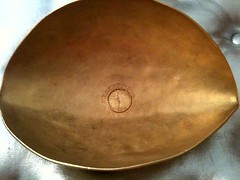 Three amateur divers in 1985 stole a dish of Roman coins and gold from the "treasure of Lava."
After 25 years of investigation, the Department of underwater archaeological research and submarine (DRASSM) of the Ministry of Culture and Communication have laid hands on a dish and Roman gold coins from the "treasure of Lava ".
Three amateur divers in 1985 stole a dish of Roman coins and gold from the "treasure of Lava."
After 25 years of investigation, the Department of underwater archaeological research and submarine (DRASSM) of the Ministry of Culture and Communication have laid hands on a dish and Roman gold coins from the "treasure of Lava ".
David Lisot passed along this press release:
 CoinWeek.com announces the completion of a series of video tributes to numismatist David W. Akers. David passed away on July 11, 2012 and was considered by many to be one of the most significant numismatists to have ever lived. His achievements included working for Paramount, writing the first books on United States one dollar gold coins, auctioning the John Jay Pittman Collection, and consulting for PCGS. CoinWeek executive producer David Lisot spoke to some of the coin hobby's more senior participants who shared some of their memories of this well liked man.
CoinWeek.com announces the completion of a series of video tributes to numismatist David W. Akers. David passed away on July 11, 2012 and was considered by many to be one of the most significant numismatists to have ever lived. His achievements included working for Paramount, writing the first books on United States one dollar gold coins, auctioning the John Jay Pittman Collection, and consulting for PCGS. CoinWeek executive producer David Lisot spoke to some of the coin hobby's more senior participants who shared some of their memories of this well liked man.
Dave Hirt writes:
ad=article&ArticleId=25775&et_mid=580977&rid=233685723)
MORE ON ROYAL CANADIAN MINT COPYRIGHT ISSUES
 Another great issue of The E-Sylum last week! You excerpted an article forwarded by Tom Kays --- “Musician vs Royal Canadian Mint” --- that immediately brought back memories of working on Jim Haxby’s Guide Book of Canadian Coins and Tokens, the first edition of which was published this year (and which won the Numismatic Literary Guild’s 2012 award for Best Specialized Book, World Coins).
Another great issue of The E-Sylum last week! You excerpted an article forwarded by Tom Kays --- “Musician vs Royal Canadian Mint” --- that immediately brought back memories of working on Jim Haxby’s Guide Book of Canadian Coins and Tokens, the first edition of which was published this year (and which won the Numismatic Literary Guild’s 2012 award for Best Specialized Book, World Coins).
MORE ON THE SIOUX CITY CORN PALACE FESTIVAL MEDALS
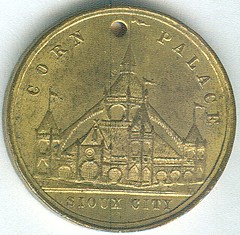
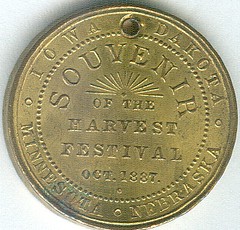
1887 Sioux City Corn Palace Medal
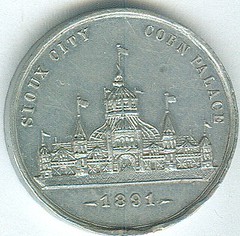
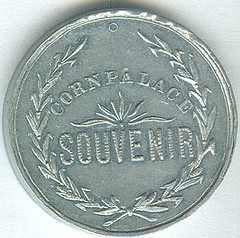
1891 Corn Palace Medal
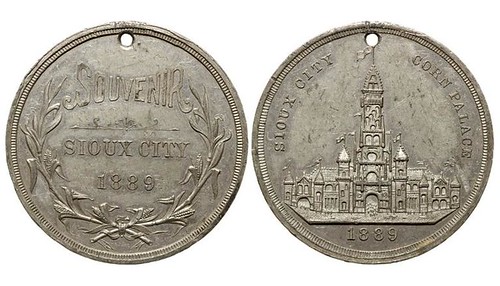
MORE ON THE ALBANY FIRST PRESBYTERIAN CHURCH'S PENNY
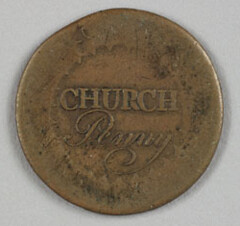 As part of the 250th Anniversary Celebration (1763-2013) our
congregation, by order of the Session, will present a penny to
the Albany Institute of History and Art. Not just any penny, it
is the Albany Church Penny, minted in 1790 for the First
Presbyterian Church. It is “one of the great coinage
curiosities of the American colonies and the early federal
period” according to a description on a numismatics auction
site.
As part of the 250th Anniversary Celebration (1763-2013) our
congregation, by order of the Session, will present a penny to
the Albany Institute of History and Art. Not just any penny, it
is the Albany Church Penny, minted in 1790 for the First
Presbyterian Church. It is “one of the great coinage
curiosities of the American colonies and the early federal
period” according to a description on a numismatics auction
site.
NOTES ON THE ALBANY CHURCH PENNY
(www.coinbooks.org/esylum_v15n39a19.html)
WESLEY SMITH'S TRAVELING FRACTIONAL CURRENCY EXHIBIT
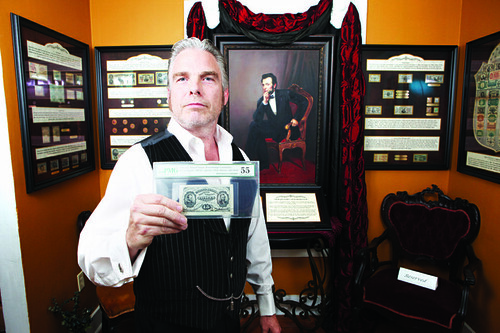
-fractional-currency-exhibi/)
PARANORMAL IMAGES ON COINS AND CURRENCY
THE BOOK BAZARRE
THE NUMISMATIC ART OF SHELLEE GRAHAM
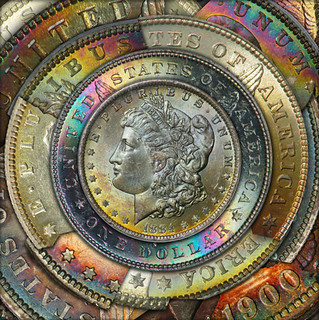
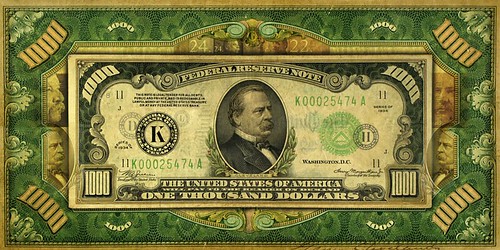
ARTICLE PROFILES AUTHOR ROBERT W. JULIAN
-honored-for-lifetime-of-magazine-articles)
THE POLITICAL SATIRE MEDALS OF R.W. JULIAN 1977-1981
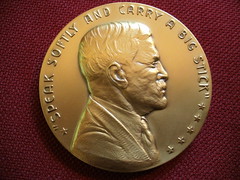
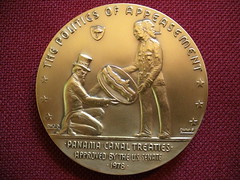
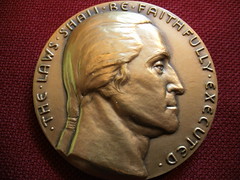

TUNGSTEN-FILLED GOLD BARS
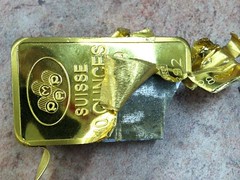 In jewelry stores on 47th Street and Fifth Avenue in Manhattan, the important trust between merchants has been violated. A 10-ounce gold bar costing nearly $18,000 turned out to be a counterfeit.
In jewelry stores on 47th Street and Fifth Avenue in Manhattan, the important trust between merchants has been violated. A 10-ounce gold bar costing nearly $18,000 turned out to be a counterfeit.
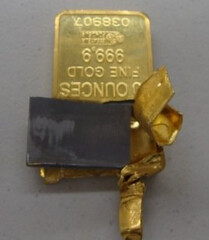 Recently, he said, a fellow merchant on 20th street drilled into a 10-oz. bar he'd been sold to check its quality — and learned it was salted with tungsten. He warned Fadl to do the same.
Here's what Fadl found:
Recently, he said, a fellow merchant on 20th street drilled into a 10-oz. bar he'd been sold to check its quality — and learned it was salted with tungsten. He warned Fadl to do the same.
Here's what Fadl found:
COIN ROLLS IN "ORIGINAL BANK WRAPS"

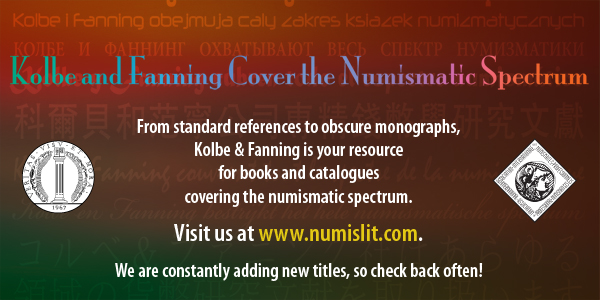
AUNG SAN SUU KYI COLLECTS 2008 CONGRESSIONAL GOLD MEDAL
 Lawmakers united by their respect of Myanmar democracy leader Aung San Suu Kyi on Wednesday presented her with Congress’ highest civilian honor in a ceremony in the Capitol Rotunda, ahead of a meeting with President Barack Obama.
Lawmakers united by their respect of Myanmar democracy leader Aung San Suu Kyi on Wednesday presented her with Congress’ highest civilian honor in a ceremony in the Capitol Rotunda, ahead of a meeting with President Barack Obama.
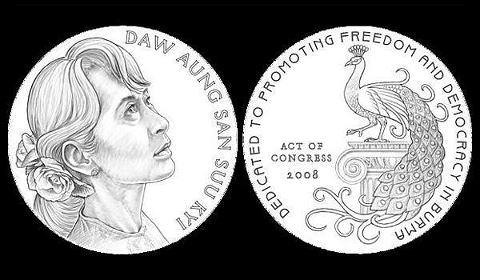
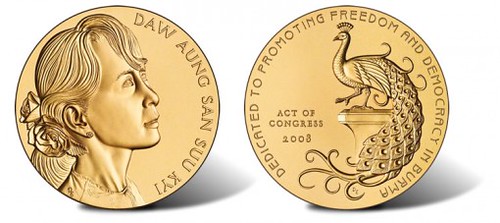
-to-honor-myanmars-suu-kyi-with-congressional-medal/2012/09/19/c648eeb8-0227
-11e2-bbf0-e33b4ee2f0e8_story.html)
NEW ZEALAND EARTHQUAKE BRAVERY MEDAL AWARDED
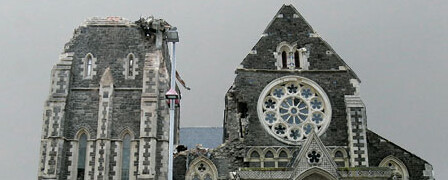
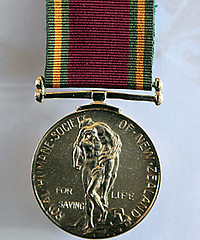 A rare bravery award has been put on public display to give Christchurch residents a permanent reminder of their heroism after the city's earthquakes.
A rare bravery award has been put on public display to give Christchurch residents a permanent reminder of their heroism after the city's earthquakes.
Bravery-award-is-peoples-medal)
NEVADA MAN DIES WITH GARAGE FULL OF GOLD
 An unusual discovery inside the home of a deceased Nevada recluse could result in a life-changing fortune for a San Rafael woman.
An unusual discovery inside the home of a deceased Nevada recluse could result in a life-changing fortune for a San Rafael woman.
WALMART CLERK RIPS UP WOMAN'S $100 BILLS
WalMart-employees-ripped-womans-100-bills-thought-fake.html)
MORE ON THE PENNY PAINTINGS OF JACQUELINE LOU SKAGGS
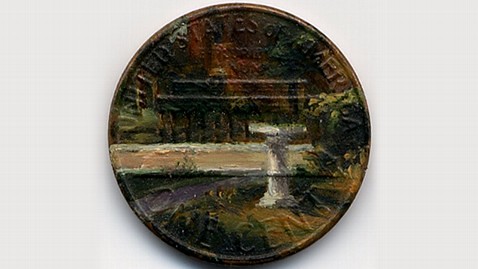
HASEGAWA YOSUKE'S ORIGAMI CURRENCY CAPS
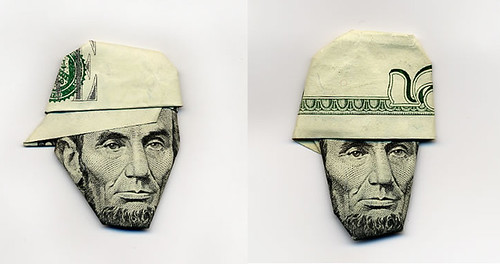
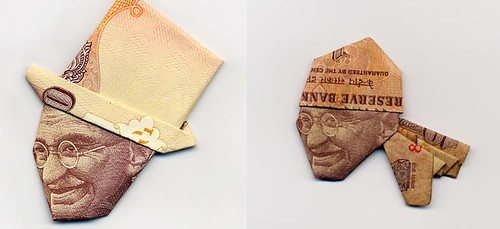

FEATURED WEB PAGE: MEDIEVAL AND MODERN COIN SEARCH ENGINE
This week's Featured Web Page is the Medieval and Modern Coin Search Engine, suggested by Bruce W. Smith.

www.mcsearch.info
